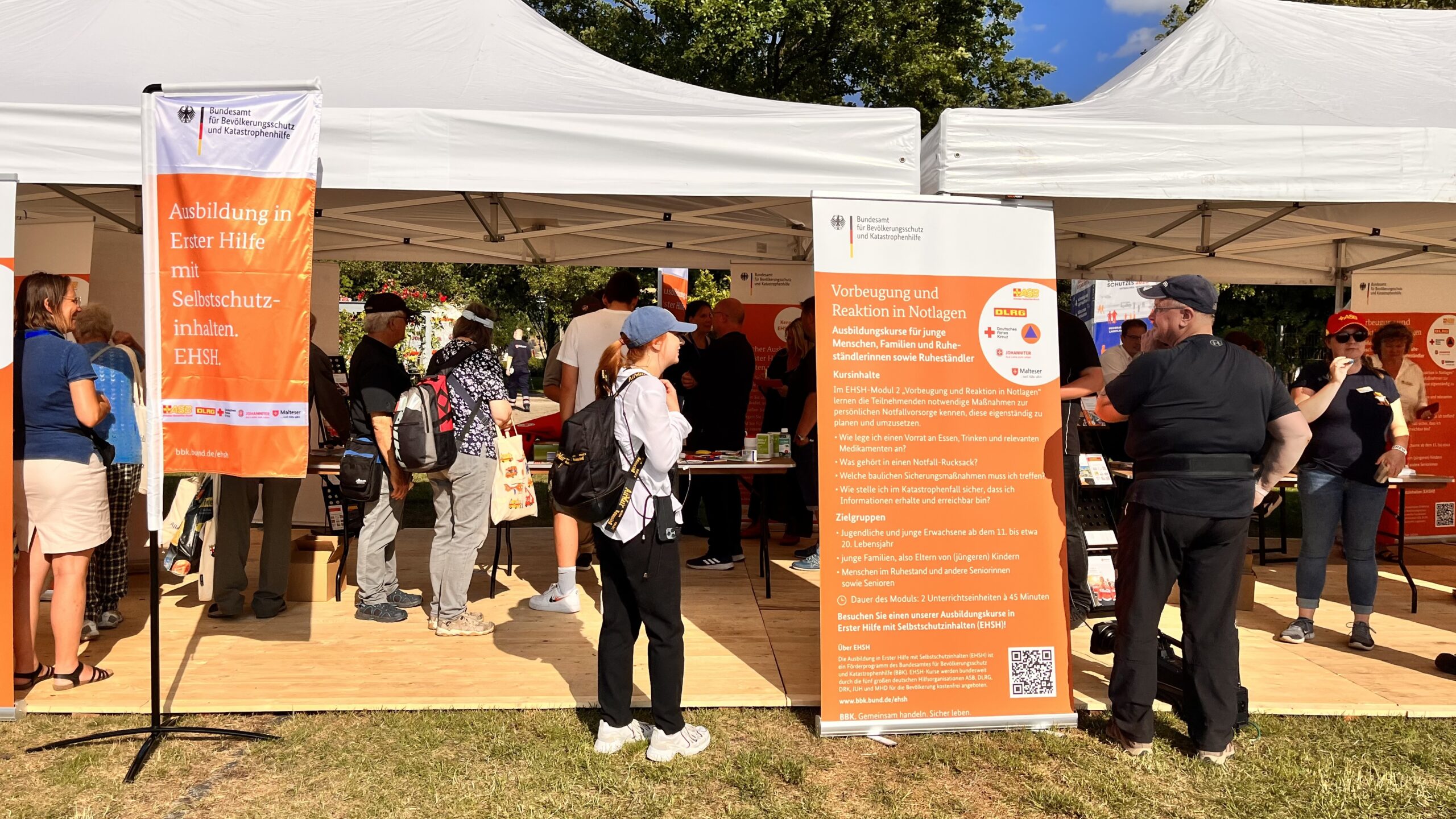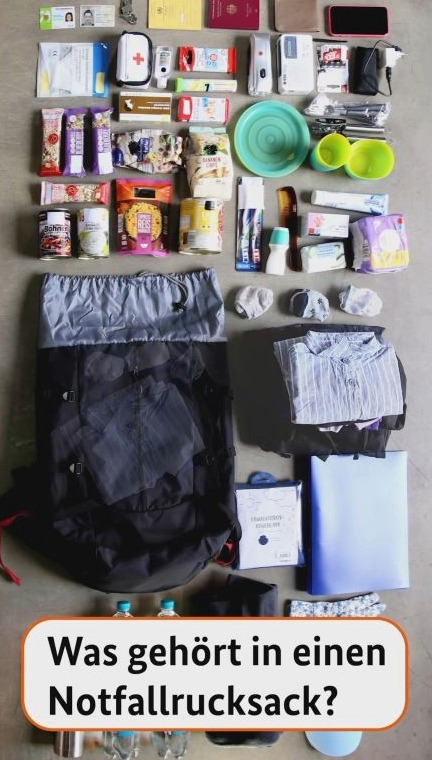25.05.2024 | Fachbeitrag
CPR, recovery positions, wound care—most people have taken a first aid course at some point. These courses are mandatory for driver’s licenses and workplace first responders. In Germany, however, over 400,000 people have now completed the EHSH course offered by the Federal Academy for Civil Protection and Civil Defense (BABZ) under the BBK (Federal Office of Civil Protection and Disaster Assistance). This course focuses on one key question: How can different groups in society best prepare themselves, even for situations that go beyond everyday emergencies?
EHSH stands for “Training the Public in First Aid with Self-Protection Content,” but the knowledge imparted in these courses goes far beyond that of a basic first aid course. While it’s great if as many people as possible know what to do in acute medical emergencies or accidents, participants in EHSH courses also learn how to effectively implement self-protection measures—and how crucial it is to be personally prepared.
 Why Is Self-Protection Important?
Why Is Self-Protection Important?
Self-protection means learning how to help yourself and others in extraordinary emergencies—until professional help arrives. This can be critical during events like floods, heavy rainfall, or in cases of civil defense. But wouldn’t it be smarter to provide first aid and then wait for the professionals? Frank Meurer, acting head of BABZ, clarifies: “In large-scale emergencies or disasters, as well as in civil defense scenarios, it can take much longer for state-organized help to arrive than in everyday first aid situations. During this time, people affected are on their own. That’s why it’s essential to learn how to protect yourself and help each other! This includes, above all, personal preparedness.”
Tailored Programs for Every Target Group
The five major German aid organizations—ASB, DLRG, DRK, JUH, and MHD—offer EHSH courses tailored to different target groups. These groups include children, teenagers, young adults, seniors, caregivers, people with migration backgrounds, business owners, and leaders with a multiplier function. Frank Meurer explains: “We aim to address and train all target groups specifically. With a total of seven different modules, we want to first and foremost reach particularly vulnerable groups within the broader population. Each module focuses on a different aspect. Some modules are suitable for multiple target groups, others are tailored specifically to one group, and some modules can even be combined.”
 Learning What Matters in Emergencies
Learning What Matters in Emergencies
One of the modules is called “Prevention and Response in Emergencies.” In this module, participants learn the measures that are crucial for personal emergency preparedness. This includes, among other things, stocking up on food, water, and essential medications, packing an emergency kit, or preparing for an extended power outage. Other potential issues related to the home, such as heating failures or appropriate structural security measures, are also discussed. Another key question covered in the course: How do I communicate when the power is out? And how do I access information? This course is aimed at teenagers, young adults, (young) families, and seniors.
These same target groups can also take the modules “Medical First Aid” and “Caring for Those in Need of Assistance.” The first module teaches participants how to go beyond “normal” first aid measures, for example, by immobilizing bone and joint injuries or improvising carrying techniques. The latter module provides knowledge on how to offer caregiving support in a personal environment, such as in the neighborhood or with family members.
Self-Protection in All Areas of Life
The modules “Self-Help for Caregivers,” “People with immigrant backgrounds,” and “Promoting Self-Protection in Businesses, Authorities, and Institutions” are a bit more specialized. As the module names suggest, they are explicitly aimed at caregivers, people with migration backgrounds, and decision-makers and opinion leaders in businesses, authorities, or institutions. Why is this subdivision necessary? Frank Meurer explains: “We want to convey exactly the information people need. For example, those who care for someone must act differently—and prepare differently—in crisis situations. The module for people with migration backgrounds also addresses cultural nuances in Germany—such as the importance of first aid or the handling of personal space and proximity.”
Leaders in businesses, organizations, or authorities gain awareness of their role as multipliers and decision-makers in their module. They learn that in their position, they can make a significant contribution to civil protection. They are not only responsible for motivating self-protection among their employees and within their institution but also for society at large. In the EHSH module, they can learn how to minimize risk factors for the surrounding population and contribute to the care of the population in extraordinary emergencies. Additionally, a resilient business ensures the continuity of economic output even during crises, which is also of great importance in a security policy context.
Safety for Children
For children, there is a special module called “Safety and First Aid for Children.” In this module, children between the ages of 3 and 10 learn in a playful way, over two 45-minute sessions, how to handle dangerous situations and what to do in emergencies. They learn the correct behavior during storms, heavy rain, floods, fires, or extended outages of power or communication. Thomas Mitschke emphasizes: “The goal is not to instill fear—quite the opposite. By providing children with practical tips on how to behave in emergencies, we strengthen their self-confidence. In case of an emergency, they will then know how to help themselves and others.”
Know More, Help Better: Sign Up for an EHSH Course Now!
No matter how different the modules are, they all have one thing in common: they demonstrate how important it is for people of all ages to engage with the topic of self-protection. The more people in Germany who engage with self-protection content, the easier it will be for the population to respond confidently in a potential crisis. Events like the flood disaster in the Ahr Valley show just how crucial it is to be prepared for all eventualities. Those interested can even be trained as EHSH instructors with a volunteer organization.
For more information and contact details for the aid organizations, visit: www.bbk.bund.de/ehsh